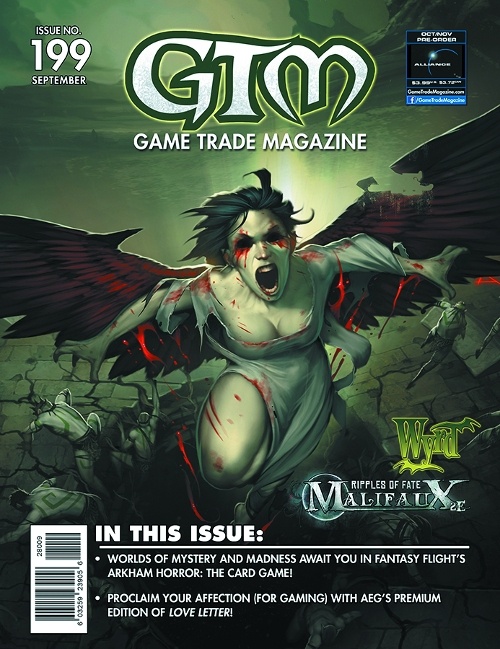Rolling for Initiative is a weekly column by Scott Thorne, PhD, owner of Castle Perilous Games & Books in Carbondale, Illinois and instructor in marketing at Southeast Missouri State University. This week, Thorne comments on the number of new games being released this year.
We really have a glut of gaming products hitting the market and really have had for the past few years. It is to the point, though, that only a web based store can offer everything that comes out on a monthly basis and even then, stocking them all would tie up a whole lot of warehouse space, meaning that they likely receive an order, forward it on to the publisher, and then take possession of it to ship onto the customer. What brings me to this conclusion? The current issues of Meeple Monthly and Game Trade Magazine.
I did a quick count of the number of games and expansions offered in each, not counting novels and non-fiction books or miniatures figures, and came out with over 120 different items. Of course, publishers want to produce new products for their customer base and there are some customers, not many, unfortunately, who will buy everything that releases new for a game. If we count in miniatures and books, we are looking at somewhere in the neighborhood of over 150 new items each month. That works out to about 1800 to 2000 new gaming products every year. That is a lot of products for the market to absorb.
Online stores have infinite shelf and display space to display products, but for the brick and mortar store, carrying that many new products on top of perennial-selling products like Dungeons & Dragons, Catan, Betrayal at House on the Hill, Fluxx, Dead of Winter, Munchkin, Gloom, etc. (though some companies are considerately making the FLGS job easier by offering exclusives to chain stores such as Target, Barnes and Noble and Walgreens, meaning we don't have to worry about stocking them, but that is a subject for another column) is tough.
So we have a lot of games that already sell on a regular basis AND we have about 1,500 or so new products releasing every year, more than the market can reasonably absorb. A rule of thumb is that approximately 10% of the products released during a year will still sell 5 years for the date of release, meaning that of those 1,500 products releasing this year, only roughly 150 will still be sought by customers 5 years from now.
The trick, and the job of the retailer, is to figure out what customers will want. If word of mouth starts trending on a product and we start seeing mentions of it in the mass media, such as what happened with Catan (popular among gamers in the know since the 1990s) and Cards Against Humanity, customers will come in asking for the game. The other thing really driving game sales is the TableTop effect, expanded to other media. A game appearing on TableTop or Watch It Played or getting lots of attention at Gen Con creates awareness among other customers, creating positive word of mouth and driving sales.
The problem occurs when neither of these situations happens. A publisher sells a game through the channel and the distributor and retailer have to decide whether to stock it or not. If they do and it doesn't sell, it winds up on a distributor’s sale list or the retailer's clearance table, which unfortunately happens way too often.
The opinions expressed in this column are solely those of the writer, and do not necessarily reflect the views of the editorial staff of ICv2.com.

Column by Scott Thorne
Posted by Scott Thorne on September 6, 2016 @ 1:24 am CT
MORE GAMES
For 'Marvel: Crisis Protocol'
August 19, 2025
Atomic Mass unveiled two new Spider-Man Character Packs, for Marvel: Crisis Protocol.
'Adventure is Nigh!'
August 19, 2025
Slugfest Games will release Adventure is Nigh! , a new Red Dragon Inn standalone expansion, into retail.
MORE COLUMNS
Column by Rob Salkowitz
August 19, 2025
For Horror Week, columnist Rob Salkowitz asks whether the horror boom can help get us through a moment full of woe and dread.
Column by Scott Thorne
August 18, 2025
This week, columnist Scott Thorne discusses some of the most frightfully fun games of the year for Horror Week.








